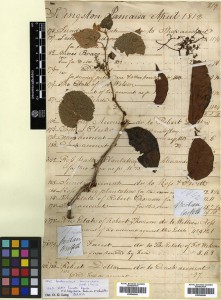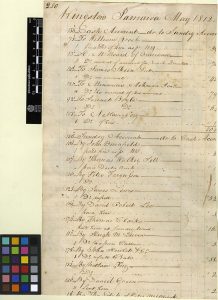I’ve said this before but sometimes you find amazing things when raking through the herbarium cabinets.
I first came across this specimen when I was part of the digitisation team specifically working on Himalayan Type specimens. Although this is not a Type specimen, they are first records of these plant species from Bhutan and it is one of my all time favourites because of its uniqueness and history.

William Griffith Specimens from Bhutan collected 1837/8. Vitis heyneana and Parthenocissus semicordata.
It was collected in 1837-8 by William Griffith (1810–1845) who was a surgeon botanist on the first official diplomatic missions to Bhutan from British India. Griffith’s gatherings are the first scientific plant collections from Bhutan, or Bootan as it is on the labels.
You can read about his trip in a digitised copy of this Itinerary published after his death in 1848 by the East India Company
The less than inspiring bits of plant on the sheet are Vitis heyeana (a grape species from SW China and the Himalaya) and the other is Parthenocissus semicordata (a Himalayan Virginia creeper). The sorry state of the specimens is a result of Griffith’s untimely death, the specimens languishing in the herbarium at Kew and beings eaten by insects the the wooden chest they were stored in, before they were finally looked at.
The number on the sheet are the numbers that are those found in Nathanial Wallich’s Catalogue of Plants for the the East India Company. As part of the Flora of Bhutan project here work was done to try and tie these number to Griffith’s Itinerary numbers.
For these two
- Number 1842 the Vitis is Griffith’s Intinerary number 61, based on the desciption.
- Number 1845 the Parthenocissus possibly relates to Griffith’s Itinerary number 1017.
The most remarkable thing about these specimens is that they are mounted on a page from an accounts ledger that looks like it was once in Kingston Jamacia. The two sides from April and May 1812 seems to record various cash transactions. How these specimens collected in Bhutan 35 years after the ledger was being used in Jamaica ended up mounted on it is anyones guess. I like to think recycle and reuse may have been just as important back then.


1 Comment
1 Pingback